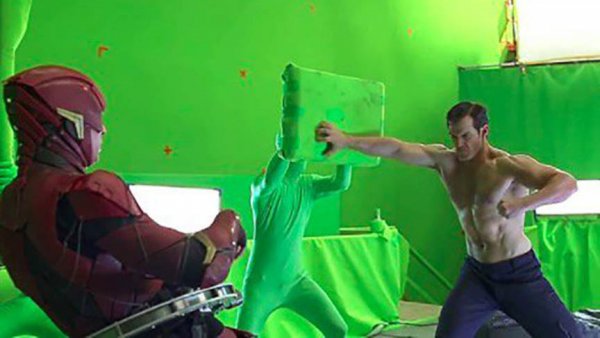
When we buy a ticket to see a superhero movie these days, we do so in the knowledge that a lot of what we're about to see has been created digitally — and the special effects put together for DC movies are no different.
You simply can't make a superhero film without relying on the work of visual effects artists to some degree, but the level of reliance in the modern age has reached heights that it can be difficult to really understand unless you see the original footage with your own eyes. Even though we're well aware of the prevalence of CGI going into a comic book blockbuster, when you strip away the special effects and see exactly what the film looked like before the digital magicians in the crew got their hands on it, it's pretty shocking to behold. From Superman's first believable flight to his infamous vanishing mustache, this is what DC movies look like without special effects.
Superman: The Movie (1978)
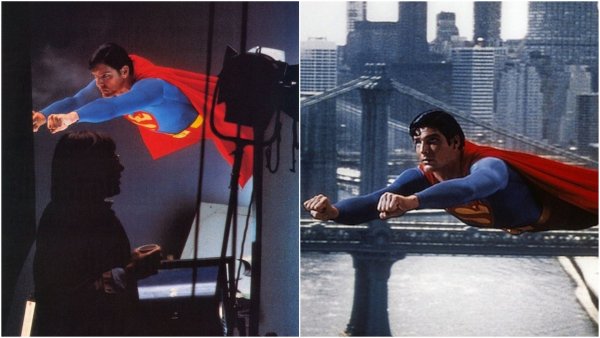
Superhero movies as we know them today owe their existence to Richard Donner, whose 1978 adaptation of Superman cemented the character's place at the heart of American pop culture. DC Films president Geoff Johns and Marvel Studios head honcho Kevin Feige interned for Donner in their younger years, and both men have credited Donner's Superman as the inspiration behind their work in the field. "Superman: The Movie is still, to this day, the archetype of the perfect superhero film origin story," Feige said during a tribute to Donner (via MovieWeb). "I hope you don't bemoan the fact that the film has inspired all of these movies."
Both Feige and Johns have it a lot easier than Donner did back in 1978, however, as the kind of special effects available now were but a fantasy at the time. "No computers in those days, none," Donner told AFI. "90 percent of the things were impossible to do, so you made compromises. I wanted to do something in Superman that was a cinematic feat." The savvy filmmaker employed a number of clever tricks to create the illusion that the late, great Christoper Reeve had superhuman abilities, but the movie's greatest feat was making Superman fly.
This was down to Zoran Perisic's state of the art Zoptic Front Projection System, which — using an ingeniously configured combination of projectors and mirrored lenses — allowed Superman to fly toward and away from the camera. As Donner recalled, "A couple of guys that ran the flying unit were crying, because it was so good."
Batman Begins (2005)

Christopher Nolan is known for taking a practical approach to effects whenever possible (if you thought that rotating hallway fightin Inception was CGI, think again), but even he turns to the VFX team from time to time. "Batman Begins is essentially a non-effects movie, although it does have almost 600 effects shots," visual effects co-supervisor Dan Glass told American Cinematographer. One of the most challenging jobs that Glass and his partner Janek Sirrs faced was making the Batmobile look convincing, which they achieved through a mixture of trick shots and miniatures.
"A majority of the shots, even some of the more outrageous stunts, involved the full-sized vehicle shot on location in Chicago, so there's no clear point of demarcation," Glass said. "Even within the miniatures rooftop section, we cut to inserts that were shot full size to trick the viewer's eye." The "miniatures" they created weren't actually that mini at all — they made a three quarter-scale, five-foot Batmobile. "The key with miniatures is scale, and Janek pushed hard to use large miniatures," Glass added. "Some were 35 feet tall."
UK-based visual effects house Double Negative completed half of the 600 effects shots in the movie, and it was nominated at the Visual Effects Society Awards for its efforts. "Since the inception of Double Negative, we have worked on some amazing sequences, and this film definitely captures some of the most spectacular shots we've ever completed," in-house VFX supervisor Paul Franklin told Creative Planet Network.
Constantine (2005)

You could say that Keanu Reeves has been enjoying a Hollywood renaissance ever since John Wickbecame the big surprise hit of 2014, but outside of the wildly popular action franchise, his films haven't actually been doing all that well with the critics. This is nothing new for the former Matrix star, whose relationship with the Hollywood press has always been love/hate. 2005's Constantine was one of the hate moments, as — despite an audience score of 72 percent on Rotten Tomatoes — the majority of movie critics bashed the supernatural DC flick.
The film suffered from a fundamental changes deep into production, according to Deak Ferrand, Hatch FX co-founder and lead matte painter. "We began working on Constantine in April of 2004, the original delivery was set for the end of July," he told FXGuide. "However, in mid July as we were finalizing the final composites, there was a drastic change in direction, which resulted in starting a new concept phase."
Ferrand's work on the divisive Hellblazer adaptation involved creating heaven and hell, the latter of which Hatch is well-known for. "Heaven and hell for What Dreams May Come, hell in Hellboy," he said. "I also designed hell in Little Nicky… Dark moody environments are probably best suited for my style." More recently, Ferrand has worked on Kong: Skull Island, Blade Runner: 2049, and Game of Thrones.
Superman Returns (2006)
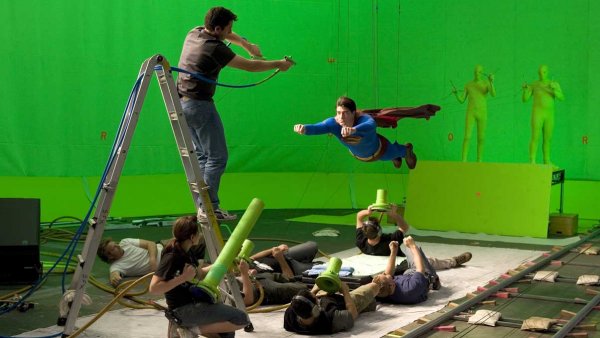
Bryan Singer's Superman Returnsmight not have broken any new ground thematically, but it was actually the first major effects picture to be shot using Panavision's Genesis camera system. "[With the Genesis] we have a color space that's broader than anything before," the film's visual effects supervisor Mark Stetson told StudioDaily. "We're in 4:4:4, so we have broader bit depth and the low light response is still very, very good." Stetson and fellow VFX supervisor Neil Corbould were nominated for Academy Awards for their achievements on the film, though despite all the great sequences the Genesis made possible (the camera was designed with digital work in mind), their biggest win was making Brandon Routh look good in flight.
"What we wanted to do was to use as many different ways of flying Superman as possible," Corbould said during a Q&A with SupermanHomepage. "Mark would always say if it looks better doing it for real then that is the way it should be done." Stunt coordinator R.A. Rondell was drafted in to make this possible, and he came up with a series of different wire rigs. "We had men dressed in green suits to puppeteer the cape flapping in the wind, we had Superman on a box and on a turntable… so many different systems," Corbould said. "It is always good to keep the audience guessing as to how we did it."
The Dark Knight (2008)
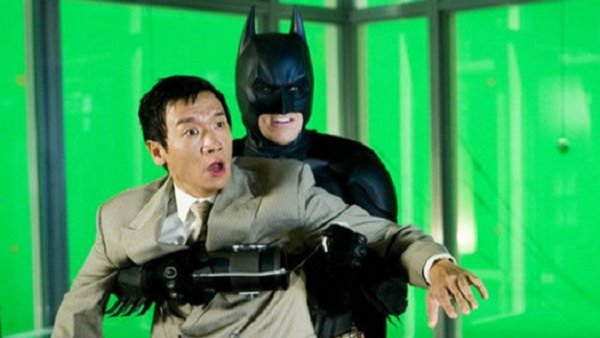
When The Dark Knight's visual effects supervisor Nick Davis sat down with BTL to discuss his work on Christopher Nolan's second Batman movie, he said the director's "singular aesthetic" made it different than any project he'd ever worked on. Davis had previously plied his trade on Troy (2004), Charlie and the Chocolate Factory (2005) and a few Harry Potter films, to name a few, but the fact that Nolan was a "great believer in real dynamics" made working with him a particularly memorable experience.
During the interview, Davis discussed contending with Nolan's urge to do everything practically, revealing that the revered helmer initially wanted to do the scene in which Batman (Christian Bale) abducts corrupt accountant Lau (Chin Han) from a Hong Kong skyscraper for real. "Why can't we do a real jump off a building in Hong Kong?" Nolan apparently asked him after he recommended the use of visual effects in the sequence. Davis' response: "Well, Chris, because someone would probably be killed, and the Hong Kong authorities might not like it."
The VFX man got his way, but Nolan insisted that they take several helicopter rides over the island to shoot plates in IMAX together, just to get it right. They were up there "every night for a week," Davis revealed.
Watchmen (2009)

It's come to acquire a certain level of cult appreciation, but Zack Snyder's Watchmen was written off as a flop by many when it didn't live up to the lofty box office expectations set by previous superhero movies. The film was dubbed "mechanical, heartless and, tragically, hollow" by SciFiNow, but in the end it found its audience, and 64 percent of Rotten Tomatoescritics wound up vouching for it.
Even the negative reviews saw fit to mention the performance of Jackie Earle Haley, who stole the show as masked vigilante Rorschach. "Performing with a sock on my head" is how the actor described the experience during a behind the scenes featurette, which revealed how the character's distinctive moving mask was created. "The eyeholes are very large so you can read the eyebrows and the expression in the eyes," visual effects supervisor John "DJ" Desjardin said. "He wears that, he emotes, he does everything, and then we take it back into the shop and we track the tracking markers and we replace everything on the face."
To make sure the design was true to the graphic novel, Desjardin studied the work of English comic book artist Dave Gibbons, who worked with writer Alan Moore on Watchmen. DJ was aware that the placing of the black blots was "very specific" to Rorschach's mood in the source material, and wanted "that level of detail" in the film, too.
Jonah Hex (2010)

Director Jimmy Hayward had worked as an animator at Pixar for a number of years (he helped bring classic titles like Toy Story, Monsters, Inc.and Finding Nemo to life) before taking on this Josh Brolin-led flick, his first time helming a live-action feature. It turned out to be his last, as Jonah Hex bombed hard and Hayward hasn't been heard from much since.
The main sticking points for critics (who overwhelmingly hated the movie) were the short running time and unfocused narrative, though the few reviews that did praise the picture mentioned the visuals. "Jonah Hex was made on a small budget, all of which went into the freaky, creative special effects," said Gizmodo, who were particularly impressed with the resurrection scene in which the titular bounty hunter coughs up a crow after being brought back to life.
"It's somewhat difficult to pull off because obviously you know it can't be real," Pixel Magic's visual effects supervisor Ray McIntyre Jr. told AWN. "A crow can't grow out of a human's mouth, so it immediately puts you in a state where you know it's computer-generated. But it amps up the need for reality even more to get it to a point where you can believe that it's a real crow coming out of that mouth."
Green Lantern (2011)
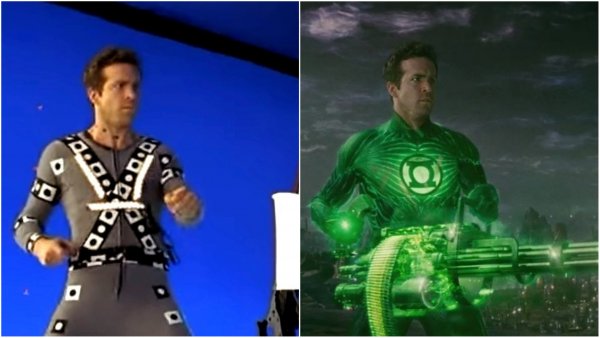
Green Lantern is one of the most infamous superhero movie flops ever — it had an eye-watering $200 million production budget and only returned a comparatively measly $116 million domestically. Fans started to worry about the adaptation when they discovered that Hal Jordan's (Ryan Reynolds) suit was to be made entirely from CGI, which, according to the film's visual effects supervisor Karen Goulekas, gave the VFX vendors some "flexibility" with the design. "We used witness cameras," she explained, "and had Ryan wear a tracking suit along with dots placed on his neck and also on his face for scenes in which he was to be wearing the mask."
In the end the suit itself was passable, but the unnatural-looking mask wound up ruining the overall effect. "Hal's digital mask, which is oddly shaped, and the way Reynolds' eyes lighten every time he uses his powers make him look a little bit like a cat pretending to be a human," ScreenCrush said when they revisited the film in 2016. "It's just a bunch of digital stuff shooting other digital stuff. And some of that digital stuff looks really bad."
While many people pointed to the substandard CGI, Reynolds blamed the script for the film's failings, revealing that it hadn't even been written when he signed on to star. "When we shot Green Lantern," he told Yahoo!, "nobody auditioning for the role of Green Lantern was given the opportunity to read the script, because the script didn't exist."
The Dark Knight Rises (2012)
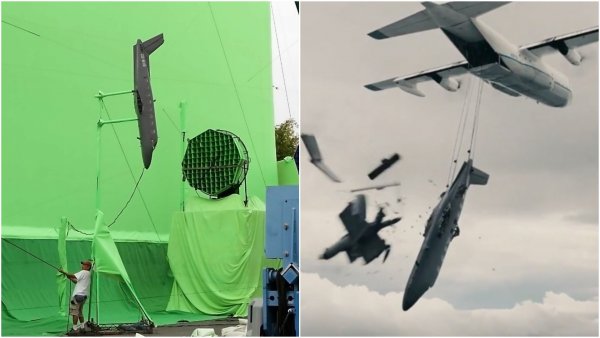
According to visual effects guru Chris Corbould, the biggest challenge that he and the rest of the VFX team faced on The Dark Knight Rises was topping the previous two films in Christopher Nolan's definitive Batman trilogy. When he talked to Collider during the movie's pre-production phase, Corbould revealed that they had some epic set pieces in mind that would be even more impressive than the car chases in The Dark Knight, one of which was filmed thousands of feet above the ground in the Scottish highlands.
Insanely, parts of the unforgettable opening scene in which Bane (Tom Hardy) is rescued from a CIA plane in mid-flight were made practically. "The stunt looks pretty seamless until you pick it apart and study how it was edited," frequent New York Times contributor Jerry Garrett said. "Look closely in the production stills and you can see the stuntmen are all wearing parachutes. But in the final take, the director said they were able to be drawn back up into the C130 with no problem."
Nolan later revealed that out of all the memorable scenes he's filmed over the course of his career, this is the one he's most proud of. "It was sort of an incredible coming together of lots and lots of planning by a lot of members of the team who worked for months rehearsing all these parachute jumps," he said during a panel at the Tribeca Film Festival (via Business Insider).
Man of Steel (2013)

According to DC regular Des "DJ" Desjardin, the techniques used in Richard Donner's classic Superman: The Movie were great at the time, but they made the viewer feel as though they were flying with Superman as opposed to watching him fly by. The VFX legend told The Verge that lots of thought went into the flight sequences in Zack Snyder's Man of Steel, but flying wasn't the only superhuman ability they had to convincingly create for the DC Extended Universe opener.
In the film's big oil rig rescue scene, we get to see just how strong (and fireproof) Superman really is. "Basically we created an oven for him to walk through with jets of gas and fire coming out of the failing oil rig," Snyder revealed in a DVD featurette (via Esquire). "We took painstaking detail and time just to make sure it was safe, but also exciting." The door of the rig (built on a lot in British Columbia) that Henry Cavill rips off to reach the seemingly doomed workers was made of tin-foil and fixed later with CGI, but the fire inside was real.
"It's funny, when you're designing a sequence and making something like this, you are amazed at what we decide to make CGI and what we decide to leave real," Snyder added. "I think the rule of thumb for me is if they touch it, if they make physical contact with it, then it should be real."
Batman v Superman: Dawn of Justice (2016)

Three years after debuting as the Man of Steel, Henry Cavill was back in the red cape and facing off against Ben Affleck's Batman. Batman v Superman: Dawn of Justicepitted DC's two flagship heroes against one another in a movie that drew from two classic comics. "Frank Miller's The Dark Knight Returnsremains on my shelf as it has ever since 1986 as one of my most favorite things ever," Scanline's VFX supervisor Bryan Hirota said. "Sitting next to it is The Death of Superman. So being asked to work on a movie that draws influence from those sources? I certainly didn't need to be asked twice."
According to Hirota, director Zack Snyder came to him with an idea for a montage that showed Superman saving people all around the world, which he wanted to intercut with news stations debating whether or not the Kryptonian was welcome on earth. Henry Cavill was digitally dropped into numerous dangerous situations and natural disasters, one of which was a huge flood. While the finished product looks pretty convincing, it turns out it was shot on an asphalt backlot in Michigan.
"In post we used our flowline software to simulate the river and debris going around the houses," Hirota told Art of VFX. "We extended the environment with added extra houses, trees and distant mountain ranges. We ended up replacing the sky to give it a bit more visual interest and as we turn around we added in Superman."
Suicide Squad (2016)

It bombed hard with critics, but DC's anti-hero ensemble Suicide Squadstill made a hell of a lot of money. Worldwide returns of almost $750 million will have come as a huge relief to Warner Bros. after previous DCEU entry Batman V Superman: Dawn of Justice was thrashed in reviews. The studio coughed up $175 million for Suicide Squad, and a good chunk of that production budget was divided between the 17different VFX houses that worked on the picture.
One such company was MPC, whose workload included Harley Quinn's (Margot Robbie) elevator fight scene. "Plates were shot of Harley fighting with a practical actor in an EA (Eyes of the Adversary) costume," MPC visual effects supervisor Seth Maury told Art of VFX. "Our goal was to replace the heads on these practical actors so that the eyes on the head were alive and blinking during each shot, and so that the head breathed and pulsed."
Maury revealed that his favorite part of the sequence was "blowing up" these heads, every one of which was unique down to the last detail. "We gave each head it's own style per shot, whether large bits or small bits of debris, or all the mass going up or sideways or spreading spherically like a firework," he said. "The idea for the heads is that they were organic and moved and deformed in a human style, but once destroyed they became rigid and exploded like rock, concrete and glass."
Wonder Woman (2017)
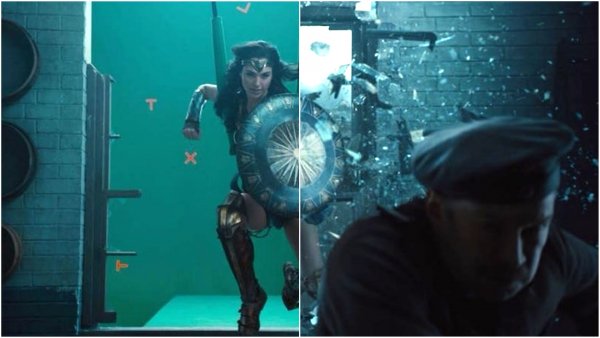
Wonder Woman turned out to be the breath of fresh air that the DC Extended Universe sorely needed, quelling rumors that the franchise was in trouble when it wooed criticsand broke box office records in the superhero genre. The film looked great, thanks in no small part to the work of MPC, who contributed around 500 visual effects shots. Led by VFX supervisor Jessica Norman, the MPC team helped create the epic beach battle, the no man's land sequence and several other action scenes.
"The beach battle sequence was shot on the west coast of Italy, across two beaches," the company's website reveals. "MPC's environment artists extended the beach and added cliff backdrops. A shoot team undertook extensive photo shoots at Vignanotica beach and along the east coast of Italy for cliff textures and reference material. Cliffs and islands were lit and rendered by MPC's lighting team."
The movie was hailed for breaking new ground with regard to female directors in Hollywood, and it turns out the VFX vendors were pushing the boundaries, too. MPC developed "new controls for hair simulations to be able to maintain the shape and style of Wonder Woman's hair in these action packed scenes." There was a time when an actor's hair was the responsibility of makeup alone, but in the age of superhero blockbusters, every strand is subject to scrutiny from the visual effects department.
Justice League (2017)
Getty Images/Warner Bros.
Justice League might not have lived up to the standard set by Wonder Woman, but it still fared better with the critics than the first three films in the franchise. The movie seemed destined to fail after Zack Snyder's daughter tragically committed suicide and the director left the project before the shoot was done. Marvel stalwart Joss Whedon stepped in to finish the film, but the result was a hodgepodge of styles that didn't work as well as Warner Bros. might have imagined.
The film's visual effects would become a huge talking point when it transpired that Warner Bros. were being forced to digitally remove a mustache that Henry Cavill had grown for Mission: Impossible – Fallout, because Paramount refused to let him shave it for Justice Leaguereshoots. "Ridiculously petty of them," a Justice League VFX artist said during an anonymous Reddit AMA (via The Telegraph). "Warner Bros. offered to pay for all the beard adding shots in MI6. They said no."
Some of the GCI on Cavill's upper lip was downright awful, with his mouth looking particularly deformed in the film's opening moments. "It shouldn't have been approved internally let alone gone all the way to make it into the film," the nameless VFX artist said of the now infamous cellphone footage scene. "That shocked me a bit. We were all looking at each other when the film started like 'WTF is this?!'"
Comments
Post a Comment